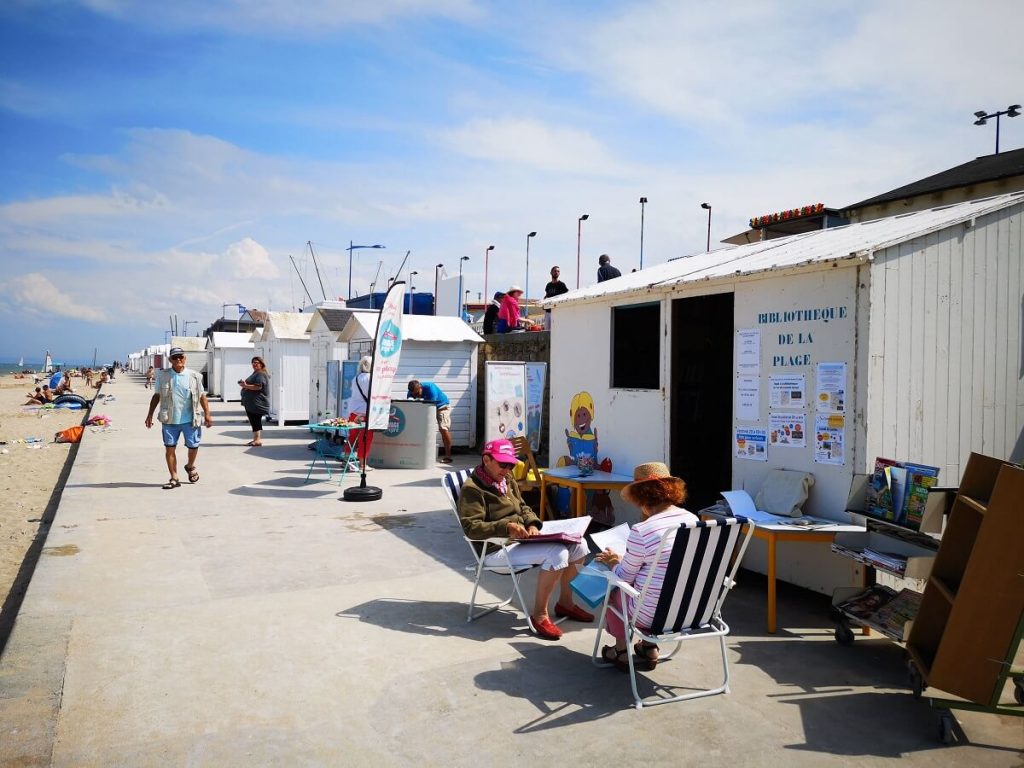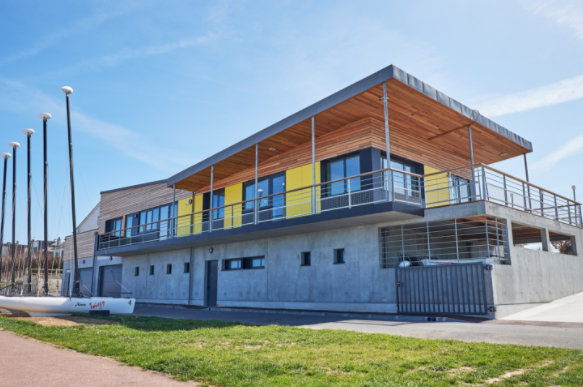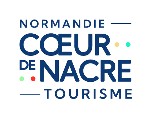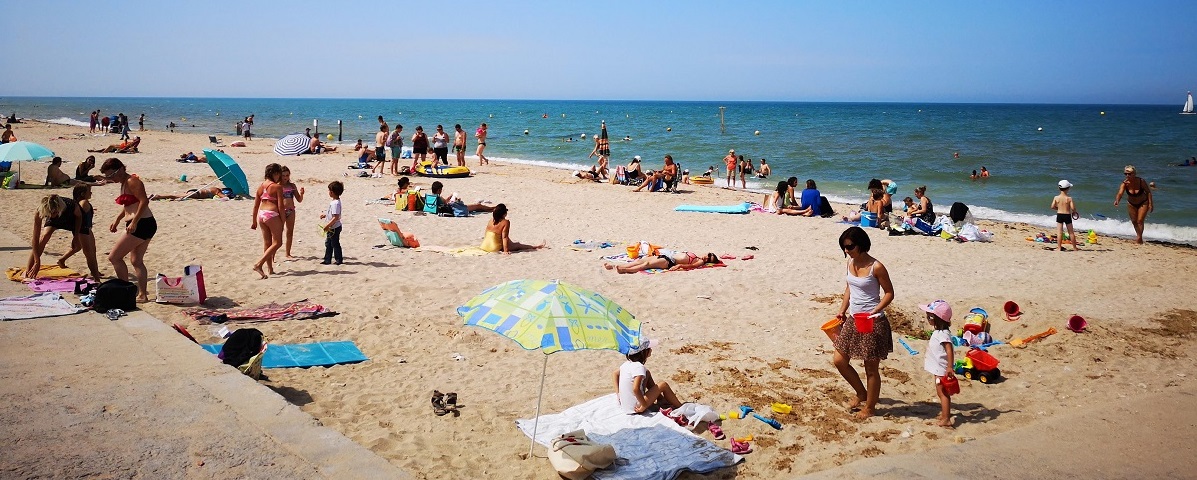“The children’s beach”
With a beach that is ideal for lounging, sandcastles and fishing, it is no wonder that the commune has been nicknamed “the children’s beach“.
It is also well known to sailors as it is an essential spot on the Côte de Nacre for kite-surfing and wingfoiling.

Add to this its dynamic sailing school, its summer activities and its tree-lined playground called “Le Bois Joli” ideal for families.
The name Langrune is said to come from the Viking land growan, which means “green land”.
In the past, the area was surrounded by dense forest and the sea was further away.
In the Middle Ages, Langrune-sur-Mer was a rich fishing and trading village.
Saint-Aubin-sur-Mer, which was a hamlet of the commune until 1851, became independent.
At the end of the 19th century, the fashion for sea bathing attracted many holidaymakers, mainly Parisians, who came to relax and treat themselves thanks to the pure, iodised air of the seaside.
On 6 June 1944, Langrune was liberated by the 48th Commando of the Royal Marines, who landed at dawn at Saint-Aubin-sur-Mer.
The Sword Beach area stretches from Langrune-sur-Mer to Ouistreham.
Langrune is a small, quiet and friendly town that offers a pleasant walk from the sea to the church via the town centre.
Don’t forget to stop for a snack and do some shopping in one of the shops on the Place du 6 juin.
Things to see and do
The two seawalls : a high one for walking and a low one for relaxing!

Voiles de Nacre : this sailing school run by a young and dynamic team is diversifying its range of nautical activities.
Kite-surfing and Windfoil are now taught.
Le bois joli : beautiful playground for children, picnic area, bandstand.
Les Essarts : this part of the rocks is well known to fishermen. One finds there étrilles, bouquets, green crabs…
La Fontaine des Trois-Grâces : a 19th century replica in cast metal of a famous statue by Germain Pilon.
The beach library : in season, reading activities and games for children.
The Place du 6 juin with its small shops and picnic tables facing the sea.
The church of Saint Martin de Langrune: one of the most beautiful monuments in Calvados, it has undergone many a torment.
Built between the 12th and 14th centuries, it reveals a wide range of architectural influences, from Romanesque to the height of Gothic.



